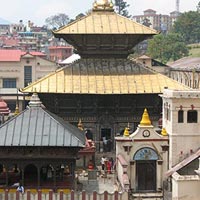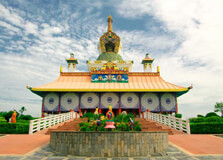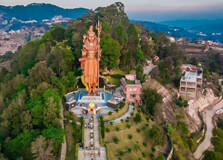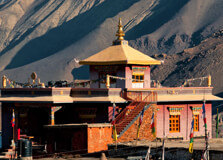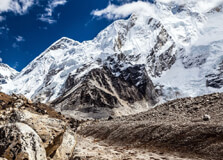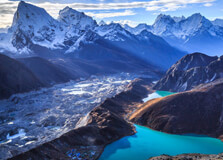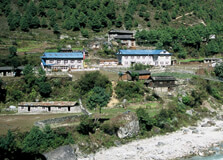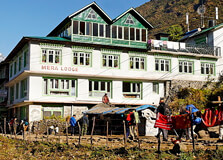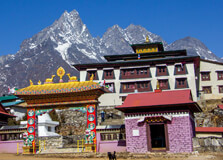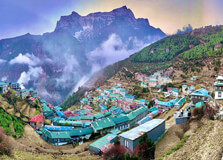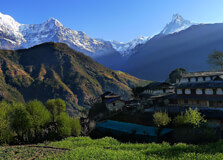
Known as the highest peak on earth, Mount Everest stands tall at a majestic height of 8848.86 meters (29,031.7 feet). It is located in the Mahalangur Himal subrange of the mighty Himalayas. Part of the international border between China and Nepal is formed of this awe-inspiring mountain. The summit is a symbol of adventure and human perseverance. It is also known as Sagarmatha in Nepal and Chomolungma in Tibet. It attracts thousands of adventurers and mountain years from around the world every year. The breath-taking beauty of the Mountain is adorned with glaciers, treacherous ice falls, snow-capped peaks, and much more that makes it a sight to behold. The region surrounding the mountain boasts of a rich biodiversity that hosts a variety of plants and animal species which are adapted to the harsh mountain environment. Mount Everest, along with its neighbouring peaks has become a sanctuary for nature, lovers and mountaineering enthusiasts alike.
History
Mount Everest has a rich history which is intertwined with human exploration and triumph. The first international attention gained by The Mountain was in 1852. This was the year it was identified as the highest peak on Earth.
Over the years numerous expeditions for attempted with several unsuccessful ventures and tragic losses. However, May 29, 1953, became a remarkable day in history, when a Sherpa of Nepal, Tenzing Norgay, and Sir Edmund Hillary of New Zealand became the first climbers to successfully reach the summit. Since then adventurers and mountain years continued to climb the summit marking an enduring legacy.
Best Time to Visit
Depending on the purpose of the visit, the best time can vary largely. For climb bars aiming to summit Mount Everest, the pre-monsoon season of spring, that is April to May is the optimal time. September to October which is the post-monsoon season of autumn is also suitable. The weather conditions are more stable with clear skies and reduced precipitation during these periods. Temperature is relatively mild which makes it easier to endure the harsh conditions of the mountain.
For those who are interested in trekking at the Everest base camp or just want to explore the surrounding regions, the above seasons of spring and autumn or ideal. Weather is generally pleasant around this time and the views of the mountain and the surrounding landscape or a mesmerising.
How to Reach?
One can reach Mount Everest in several ways that include early preparations and careful planning. The general outline is as follows. One can fly to Kathmandu Nepal, which is the capital city and start their journey. Make sure to obtain the necessary permits before heading to Mount Everest. This includes the permit to Sagarmatha National Park and the Everest region trekking. These can be obtained in Kathmandu through authorised agencies or from the immigration department.
The next step is to arrange transportation to Jiri or Lukla from Kathmandu. It is a popular starting point for trekkers and can be done by either taking a bus or private vehicle to Jiri or by booking a flight to Lukla.
3 Nights 4 Days Tour Plan Kathmandu - Everest Heli Tour - City Sightseeing
4 Days/ 3 Night
Starting Price On Request
Skyline To The Sacred - Everest Base Camp Dream Trek 13N 14D Tour
14 Days/ 13 Night
Starting Price On Request
Mt Everest Expedition - Ultimate Adventure Package 54 Days
54 Days/ 53 Night
Starting Price On Request
Powered by TourTrvelWorld
About the Site

